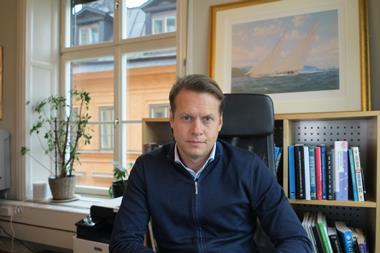Several providers of third-pillar pension products in the Netherlands have registered a sharp uptick in inflows over the summer. The increase follows the adoption of the new Duch pension law which allows for more generous tax-free pension saving.

As part of the Law on the future of pensions that came into force on 1 July this year, the allowance for tax-free pension saving in the third pillar was increased from 13.3% to 30% of gross salary.
As a result, self-employed workers and employees without a pension plan through their employer now have just as much room to accrue a pension as employees with a second-pillar pension plan. The change applies retroactively as of 1 January this year.
Providers of pension products in the third pillar have immediately noticed the effects of the new law. For example, existing customers of Brand New Day, the largest provider of third-pillar pensions in the Netherlands with €4.2bn in pension assets, paid in an average of 29% more June, July and August than in 2022. That’s twice the 15% increase the company had assumed.
The increase is also higher than estimates made earlier by independent experts. For example, tax expert Bastiaan Starink of PwC told daily Het Financieele Dagblad two years ago he expected the self-employed to hardly make extra use of the additional tax breaks.
“We clearly see that our current customers are taking advantage of the increase in the tax-free allowance,” said Joost Tieland, commercial director of Brand New Day. “Usually inflows from existing customers always hoovered around the same level. It seems we are seeing a structural change now.”
Nationale Nederlanden, an insurance company, also saw “a strong increase in inflow into our annuity accumulation product in recent months, both in euros and in numbers of new applications,” a spokesman told IPE.
The insurer, which “for competitive reasons” would not say exactly how big the increase was, sees the widening of the annual margin as an important reason for this, but not the only one.
“There is more attention in the media and in society for pensions this year, following the new pension law,” the spokesman said.
Self-employed
Still, not all providers have seen inflows increasing as much. For example, the average monthly deposit at Bright Pensioen, another provider, only increased by about €20 in recent months to €370, according to Bright’s Sjaak Zonneveld.
At the same time, self-employed people, which form a large part of Bright’s customer base, tend to only put money aside at the end of the year, noted Zonneveld.
He added: “Until now it has mainly been employees who have increased their deposits. At Bright Pensioen, we see a huge increase in contributions every year in December. Especially self-employed people with fluctuating incomes tend to be cautious about locking in their money mid-year.”
After all, assets in an annuity account are locked up until retirement. For Brand New Day too – November and December are the top months in terms of incoming deposits, making up half of all new inflows each year, according to Tieland.
‘Growth will continue’
Brand New Day and NN both expect the growth of the third pillar pension system to continue over the coming years. Brand New Day predicts that pension capital deposited with the bank in the third pillar will more than double by 2025, to €8.6bn. NN also estimates that the third pillar will eventually take “a significant share” of pension assets.
Remarkably, no figures are available on the exact size of the third pillar at the moment. Regulator DNB only has an overview of pension savings and investment products at banks. This contained €17bn at the end of 2022, of which €2.5bn in investment products.
The Netherlands Authority for the Financial Markets (AFM), which earlier this year conducted an investigation into the risks for participants in the third pillar, estimates its size at €45bn to €70bn currently. That is a fraction of the second pillar, which contains more than €1.5trn.
Budget hole looms after tax allowance increase
The extra tax break on pension savings is going to cost the Dutch treasury money.
The Ministry of Finance expects that the widening of the annual allowance to 30% of gross salary will lead to “a cost-related loss estimated at €102m annually,” according to the ministry.
This estimate seems to be on the tight side. Assuming an income tax rate of 37% (up to €73,036), this leaves room for €276m in additional pension savings per year. That’s about the amount Brand New Day expects in additional inflows next year.
Because the new pension law only took effect on July 1 this year and many people are currently still unaware of the changes and have not acted on them, the bank expects around €150m in additional pension savings this year.
The Ministry of Finance did not respond to questions about the matter.
The latest digital edition of IPE’s magazine is now available





































No comments yet